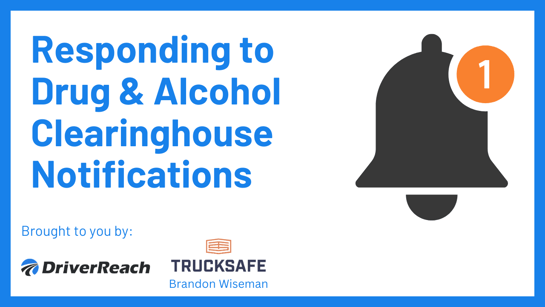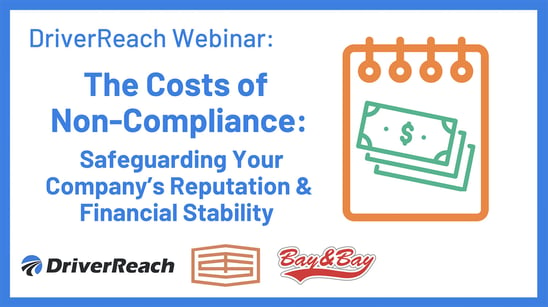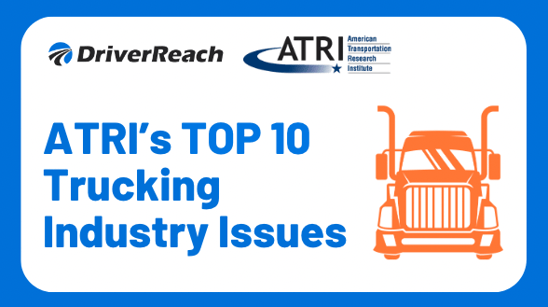By Sean Garney of Scopelitis Transportation Consulting LLC & Regulatory Consultant to DriverReach – November 2021
The Federal Motor Carrier Safety Administration’s recent update to its Drug & Alcohol Clearinghouse rules will improve safety by making it easier to detect drivers prohibited from operating a commercial motor vehicle because of drug or alcohol violations. Specifically, it requires State Driver’s Licensing Agencies (SDLAs) to take licensing action based on information it receives from the Clearinghouse.
That’s a big deal for motor carriers struggling to decide how often to run limited queries to reduce the risk associated with job shopping drivers failing pre-employment drug tests for other potential employers. These carriers, particularly those in the long haul, irregular route segment, run the risk of dispatching disqualified drivers, unaware that the driver has violated testing rules. To mitigate this risk, many have chosen to ping the Clearinghouse biannually or more often. At $1.25 per query however, these costs can add up quickly.
Beginning November 18, 2024 however, carriers enrolled in MVR monitoring services, will have an extra layer of protection. That’s because FMCSA will be notifying SDLAs whenever a driver licensed in their state is added to the Clearinghouse. SDLAs will then initiate the CDL downgrade process. When complete, the licensing action will be delivered to the motor carrier through the MVR monitoring service, which will have detected the updated licensing status.
Of course, the process isn’t bulletproof, and it could take up to 60 days for SDLAs to complete the action, but, it's still an improvement in safety and compliance. The challenge may come as carriers will need to retrain their staff to identify the change and take action to remove the driver from safety sensitive work. States have wide latitude on how they will display this new information and whether they provide a reason for the change. At a minimum, they must update the commercial status from “licensed” to “eligible” as set forth in the Commercial Driver’s Licensing Information System manual. Carriers will need to look closely at MVRs and properly interpret the information they receive.
There’s another provision in the new rule that carriers should look out for, too. Beginning November 8, 2021, FMCSA will no longer be removing violations uploaded by employers with actual knowledge that the driver was cited for driving a CMV while intoxicated if the charges are ultimately dropped or reduced. Instead, these drivers will need to complete the return to duty process (RTD) to be eligible to drive again and this data will remain on the driver’s profile for five years or until the RTD process has been complete, whichever is longer. There will be no use waiting for a judge to decide the fate of the driver, as the RTD process is required in any event.
The new rules for SDLAs are effective November 18, 2024 and will ultimately improve safety and mitigate carrier risk. But, as always, planning and training may be required to take full advantage of the new information.
Stay up to date on CDL trucking trends! Be sure to check out the DriverReach blog for other relevant articles and head over to our webinars page for an up-to-date list of upcoming events and on-demand recordings.
Listen to Taking the Hire Road podcast, hosted by Jeremy Reymer and in collaboration with FreightWaves, for timely conversations with industry experts. For more information, or to join a live group demo, visit www.driverreach.com/livedemo







